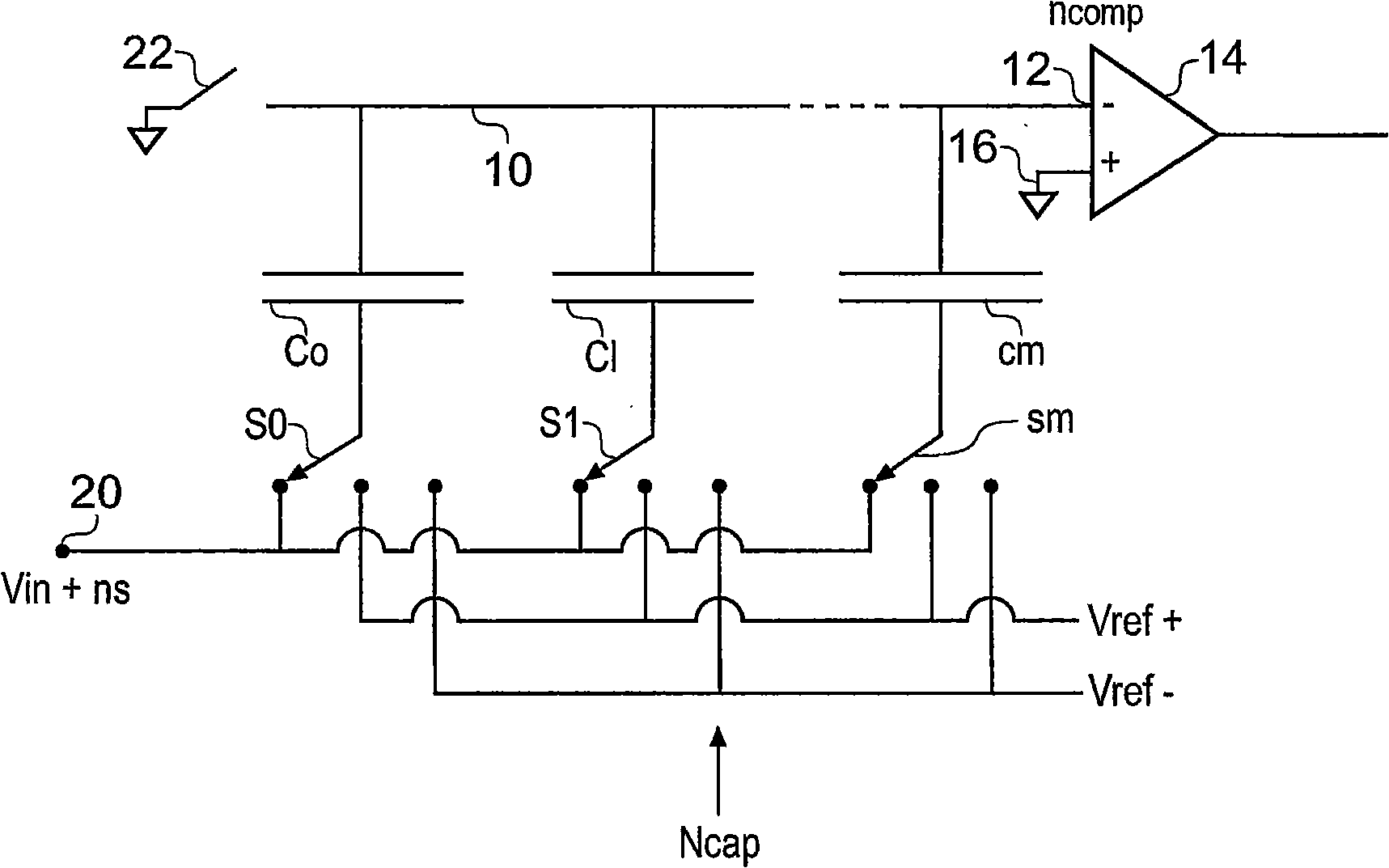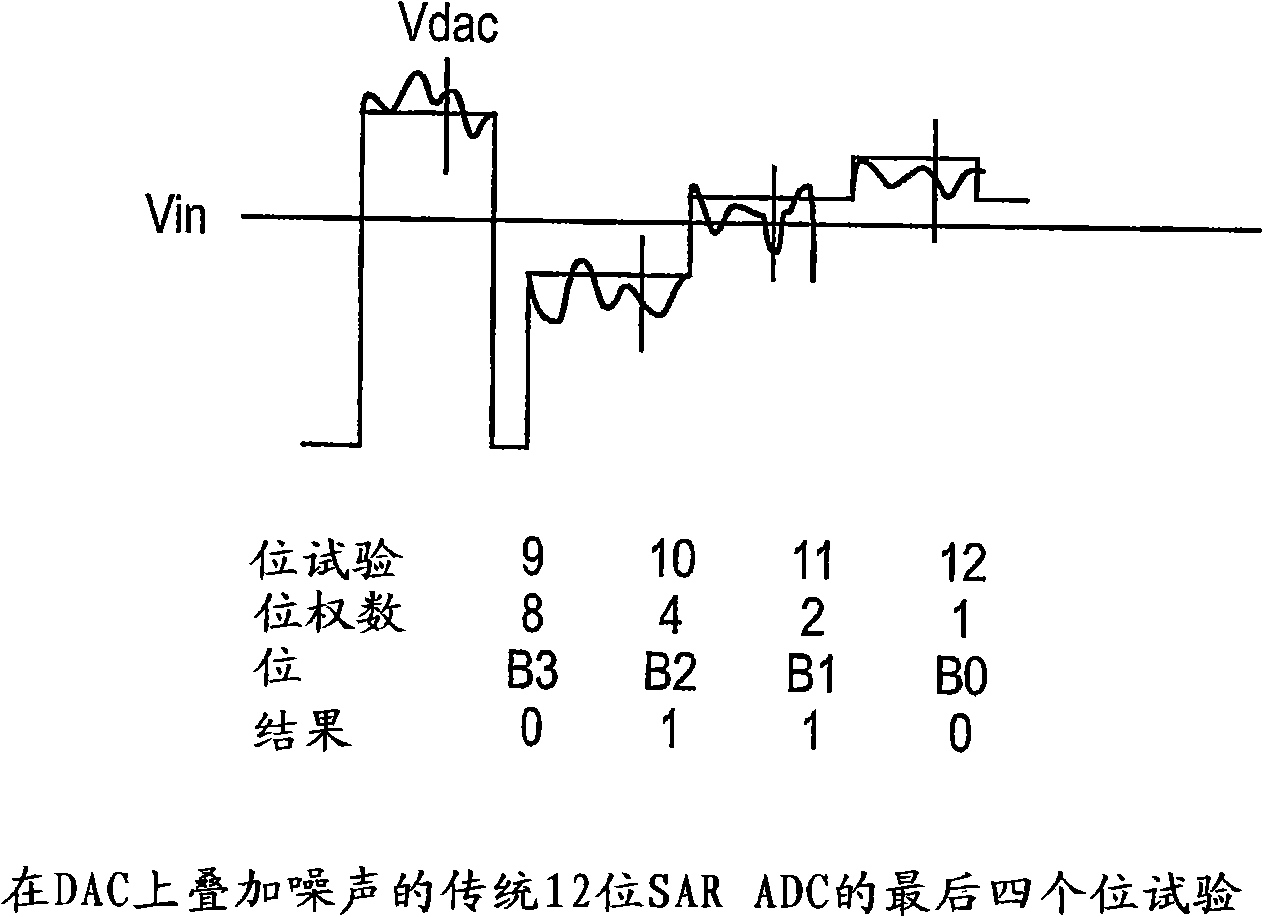Analog-to-digital converter
An analog-to-digital converter and converter technology, applied in analog-to-digital conversion, code conversion, instruments, etc., can solve the problems of long time, large false signal, large area occupied by capacitors, etc. loss, the effect of improving the signal-to-noise ratio
- Summary
- Abstract
- Description
- Claims
- Application Information
AI Technical Summary
Problems solved by technology
Method used
Image
Examples
Embodiment Construction
[0018] figure 1 The input stage of a switched capacitor based analog-to-digital converter is schematically shown. In general, the input stage includes m+1 capacitors C0-Cm, one of the plates of said capacitors (such as figure 1 The uppermost plate shown in ) is connected to a common lead 10 which is connected to the inverting input 12 of a comparator 14 . The non-inverting input 16 of comparator 14 is connected to ground. The second plate of each of the capacitors C0-Cm (as figure 1 The bottommost plate shown in ) is connected to the respective electronic switches S0-Sm. The switches S0-Sm are independently controllable to connect their associated capacitors to the input node 20 so that the capacitors can be charged to the input voltage Vin. Capacitors C0 to Cm can also be switched to a positive reference voltage Vref+ or a negative reference voltage Vref- (typically ground). Conductor 10 may also be connected to ground through an electronically controllable switch 22 whi...
PUM
 Login to View More
Login to View More Abstract
Description
Claims
Application Information
 Login to View More
Login to View More - R&D
- Intellectual Property
- Life Sciences
- Materials
- Tech Scout
- Unparalleled Data Quality
- Higher Quality Content
- 60% Fewer Hallucinations
Browse by: Latest US Patents, China's latest patents, Technical Efficacy Thesaurus, Application Domain, Technology Topic, Popular Technical Reports.
© 2025 PatSnap. All rights reserved.Legal|Privacy policy|Modern Slavery Act Transparency Statement|Sitemap|About US| Contact US: help@patsnap.com



